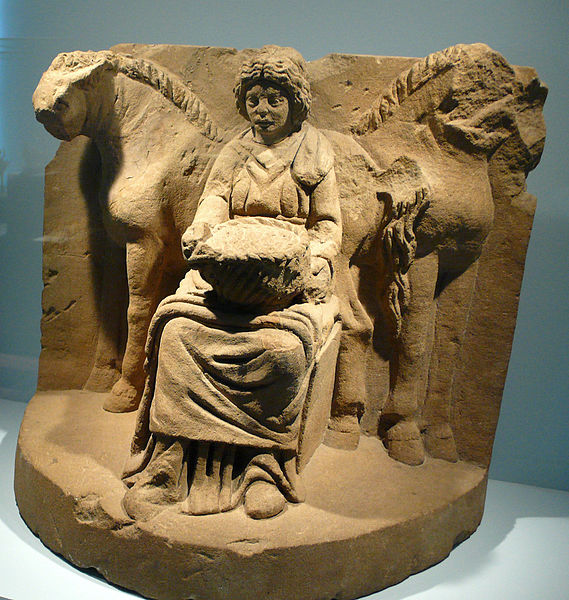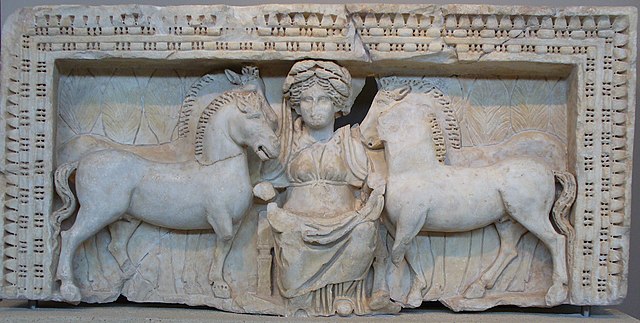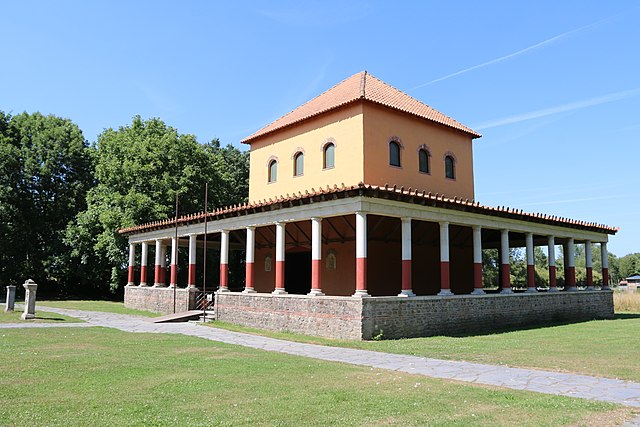In Gallo-Roman religion, Epona was a protector of horses, ponies, donkeys, and mules. She was particularly a goddess of fertility, as shown by her attributes of a patera, cornucopia, ears of grain, and the presence of foals in some sculptures. She and her horses might also have been leaders of the soul in the after-life ride, with later literary parallels in Rhiannon of the Mabinogion. The worship of Epona, "the sole Celtic divinity ultimately worshipped in Rome itself", as the patroness of cavalry, was widespread in the Roman Empire between the first and third centuries AD; this is unusual for a Celtic deity, most of whom were associated with specific localities.
Epona, second or third century AD, from Contern, Luxembourg (Musée national d'art et d'histoire, Luxembourg City)
Epona and her horses, from Köngen, Germany, about 200 AD
A relief of Epona, flanked by two pairs of horses, from Roman Macedonia
Gallo-Roman religion is a fusion of the traditional religious practices of the Gauls, who were originally Celtic speakers, and the Roman and Hellenistic religions introduced to the region under Roman Imperial rule. It was the result of selective acculturation.
Epona from Dalheim Ricciacum
Reconstruction of a Gallo-Roman temple at Aubechies.
A votive offering to an unnamed deity
Statue of Jupiter from Haute-Mare







